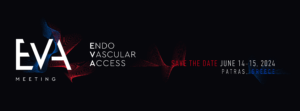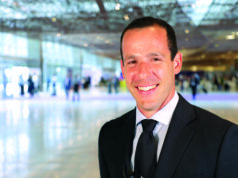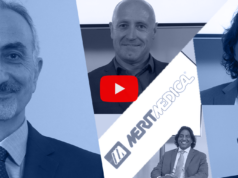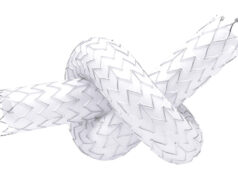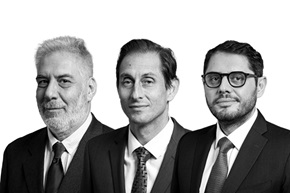
Dimitrios Karnabatidis, Konstantinos Katsanos, and Panos Kitrou (University of Patras, Patras, Greece), the directors of the Endo Vascular Access (EVA) meeting, together write about their upcoming meeting (14–15 June, Patras, Greece), discussing what they hope to accomplish through the meeting, what attendees can expect at this year’s event, and the importance of collaboration between societies.
“Paideia” is the Greek term, since ancient times, defining education. A process not limited to learning but expanding to the deep understanding of things and the holistic approach of acquiring knowledge. This has been the goal of the EVA meeting since it was first introduced in 2019 with an aim to improve the quality of care provided to end-stage kidney disease (ESKD) patients.
What do we need to know about vascular access? What is new and interesting? What are we still missing? These are some of the questions we try to answer during the EVA meeting which takes place this year on 14–15 June in Patras, Greece. We try to do this by inviting a multinational, but most importantly, a multidisciplinary faculty. Interventional radiologists, transplant surgeons, vascular surgeons, nephrologists and interventional nephrologists are invited to provide their perspective on important topics in this demanding field.
During the EVA meeting the main trial updates will be discussed. Additionally, the characteristics of the upcoming guidelines will be presented. New European Society of Vascular Surgery (ESVS) vascular access guidelines, a standards of practice document on vascular access from the Cardiovascular and Interventional Radiological Society of Europe (CIRSE), and the upcoming Spanish vascular access guidelines, together with the new Brazilian vascular access guidelines will be on podium. Like every year, the meeting dedicates “The Way Ahead” session to new technologies and advancements in therapy and innovations. This is where all future projects are presented. Artificial intelligence, machine learning and augmented reality are already part of medical training, diagnosis and decision making and during the EVA meeting, their role in vascular access will be discussed. Endovascular arteriovenous fistulas (endoAVFs)—the ability to create non-surgical AVFs—is a fundamental part of the meeting’s discussions.
This year, the directors put the “balloon-assisted maturation” concept under “the spotlight”. A procedure widely known, but possibly with evidence missing, will be discussed by a faculty of experts aiming for consensus rather than controversy. Ultrasound use in vascular access surveillance, as well as an intraprocedural decision-making tool, was a hot topic during the last EVA meeting and a Delphi initiative was taken. To that end, another session is also part of this year’s meeting. Since “endo” is a cornerstone of EVA, two sessions on endovascular procedures, one regarding interesting (“amazing”) and another one regarding difficult (“morbidity & mortality”) are part of the programme, giving the opportunity for a case-based discussion. However, as in everyday practice, vascular access treatment is not only endovascular, but also surgical, which is why we also have a session focused on the surgical procedures improving vascular access outcomes.
EVA will be celebrating its 7th collaboration with the Vascular Access Society of Britain and Ireland (VASBI) this year. It is the EVA meeting’s principle to create collaborations and alliances with societies and congresses which dedicate part, or all of their programme, to vascular access. So far, Controversies in Dialysis Access (CiDA), Dialysis Access Synergy (DASy), Spanish Multidisciplinary Vascular Access Group (GEMAV), Pan Arab Interventional Radiology Society (PAIRS), Saudi Interventional Radiology Society (SIRS), and Symposium on Vascular and Endovascular Access in Nephrology (SAVE) have already been invited and presented their perspective. We look forward to further collaborating and increasing awareness for vascular access with all our present and future partners.
The EVA meeting directors would like to express their gratitude to the faculty supporting the meeting over the years, some of whom have been present from the inaugural event back in 2019, but also the new members taking part this year. We would also like to thank our sponsors for understanding the importance of a meeting dedicated to vascular access and seeing the benefit provided to the physicians but most importantly to patients, the improved quality of care and life of whom is the goal of what we do.
